Giochi dell'Oca e di percorso
(by Luigi Ciompi & Adrian Seville)
(by Luigi Ciompi & Adrian Seville)

|
Giochi dell'Oca e di percorso
(by Luigi Ciompi & Adrian Seville) |

|
 |

Torna alla ricerca giochi (back to game search) |
 |
| Wallis's Elegant and Instructive Game exhibiting the Wonders of Art in Each Quarter of the World. | ||
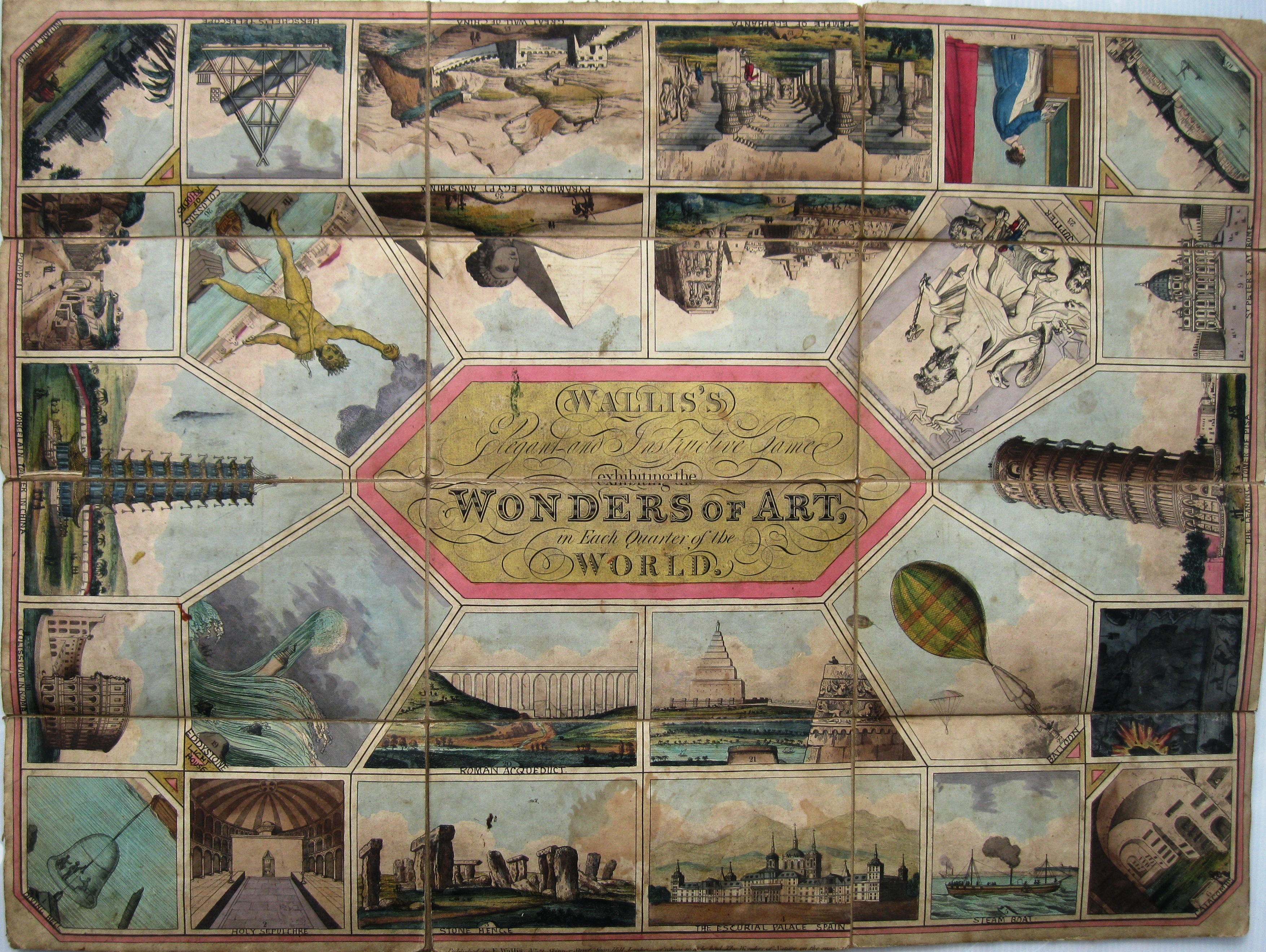 |
Versione stampabile
 |
Invia una segnalazione

|
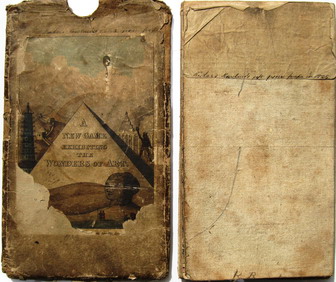  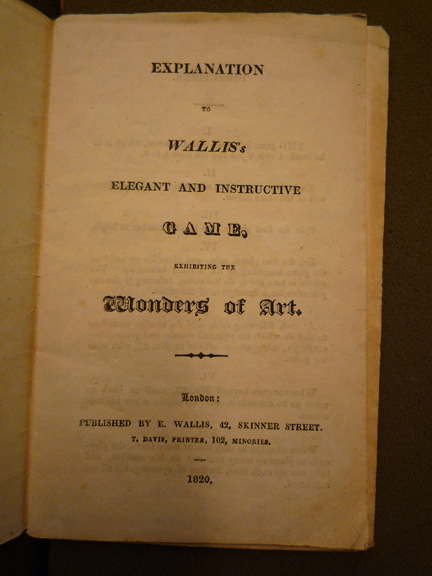 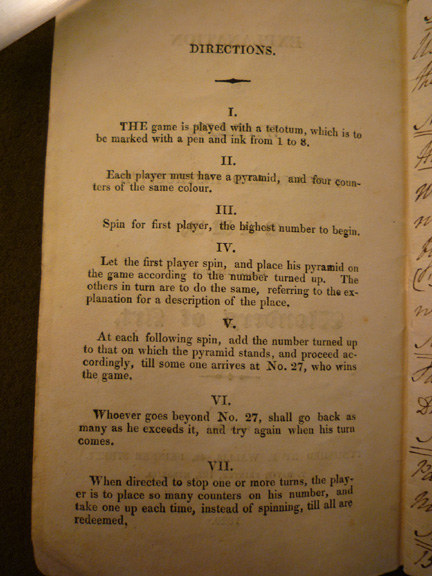 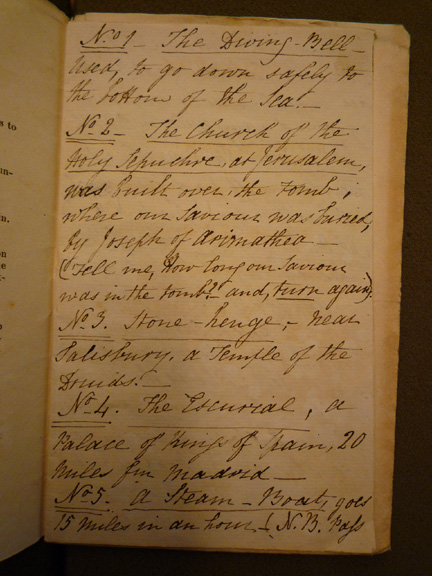 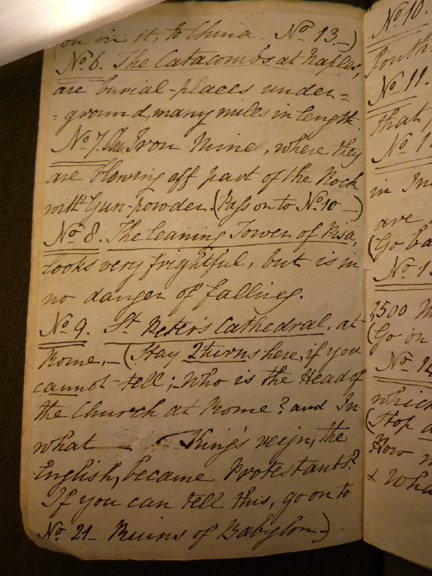 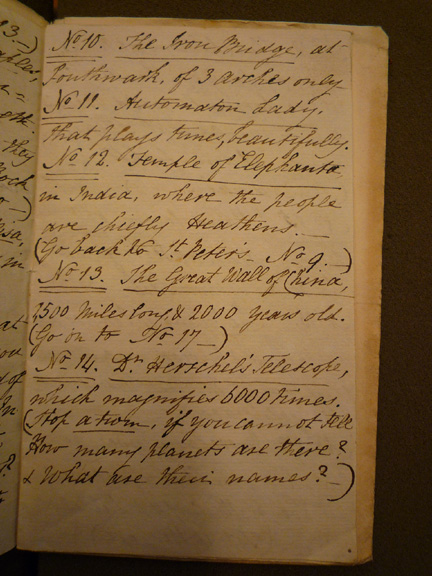 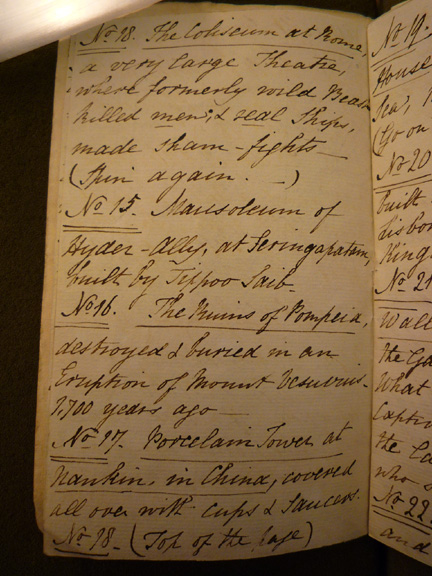 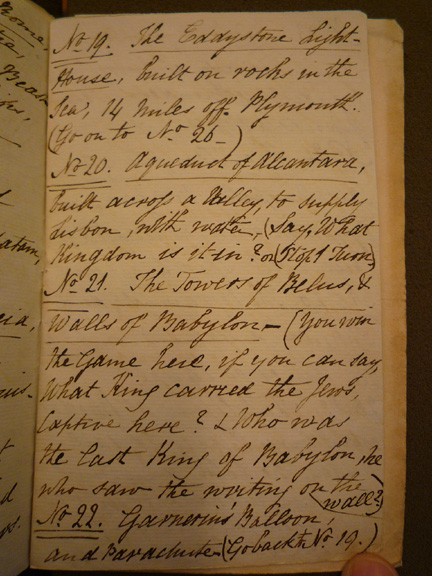  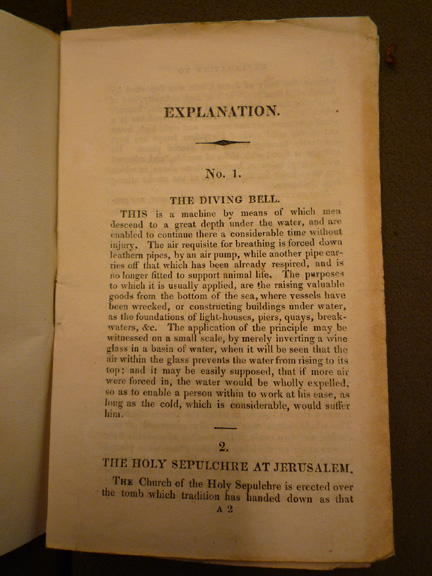 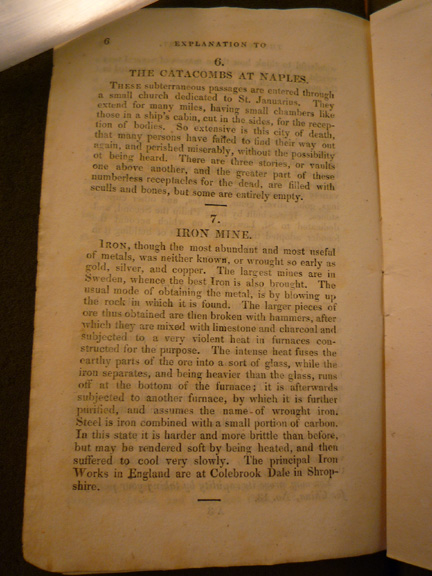  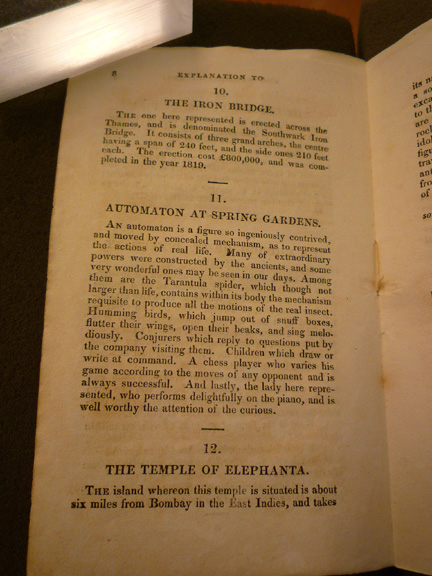 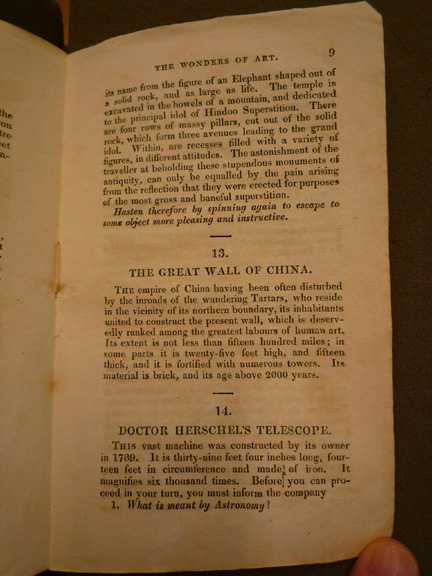  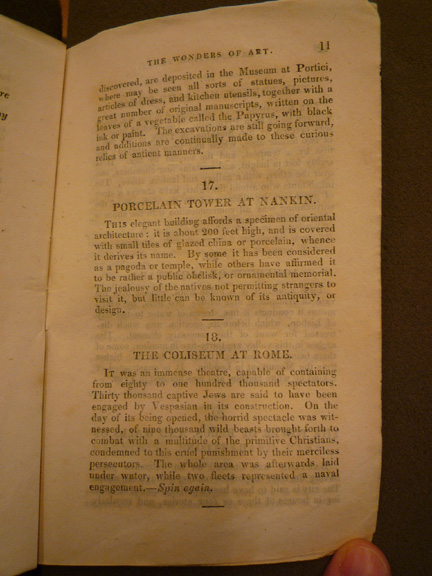 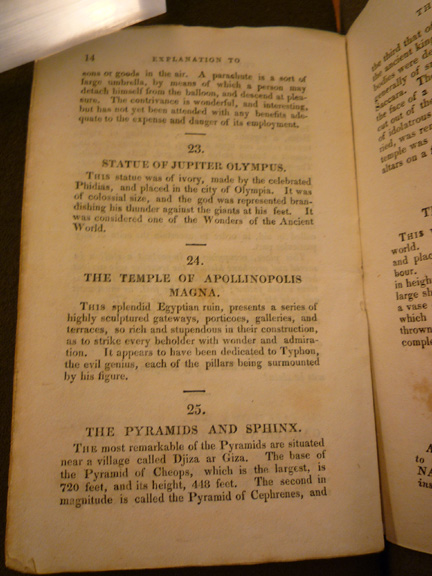 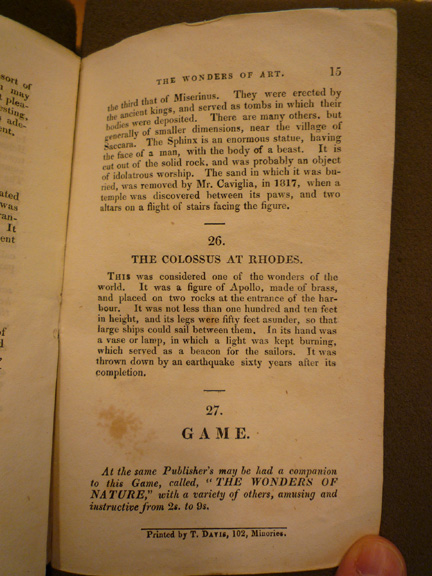  |
primo autore: | Anonimo |
| secondo autore: | Wallis | |
| anno: | 1818/20 | |
| luogo: |
Inghilterra-Londra |
|
| periodo: | XIX secolo (1°/4) | |
| percorso: | Percorso di 26 caselle numerate | |
| materiale: | carta incollata su tela (engraving on paper with linen backing) | |
| dimensioni: | 480X620 | |
| stampa: | Litografia colorata a mano (hand coloured engraving) | |
| luogo acquisto: | ||
| data acquisto: | ||
| dimensioni confezione: | ||
| numero caselle: | 26 | |
| categoria: | Geografia | |
| tipo di gioco: | Gioco di percorso | |
| editore: | Published by E. Wallis, No 42 Skinner Street, Snow Hill, London | |
| stampatore: | Published by E. Wallis, No 42 Skinner Street, Snow Hill, London | |
| proprietario: | Collezione A. Seville | |
| autore delle foto: | A. Seville | |
| numero di catalogo: | 2214 | |
| descrizione: |
Gioco di 26 caselle numerate, spirale, antiorario, centripeto. REGOLE: non riportate sul tavoliere (allegate). CASELLE: con didascalia. REFERENZA 1 WHITEHOUSE, Francis Reginald Beaman, (pag. 39): WONDERS OF ART Wallis’s Elegant & Instructive Game exhibiting Wonders of Art in each Quarter of the Globe. Published by E. Wallis, No 42 Skinner Street, Snow Hill, London, of whom may be had “Wonders of Nature" on the some plan. Not dated. (“Wonders of Nature” was published in 1818). An engraving, hand-coloured, size 25 in X 18 ½ in, mounted in 12 sections on linen, folded into slip-in case with picture label on front. There are 26 panels showing, e.g.: No 1 A Diving Bell, 3 Stonehenge, 5 A Paddle Steamer, 8 Leaning Tower at Pisa, 22 Balloon and chute, 25 Sphinx and Pyramids, 26 Colossus at Rhodes. REFERENZA 2 Game 51: The Wonders of Art Wallis’s Elegant and Instructive Game exhibiting the Wonders of Art in Each Quarter of the World. London: E[dward] Wallis, 42 Skinner Street, Snow Hill, [n.d. but, from the rule book in the Cotsen Library, 1820]. Copper engraving with original hand color, 48 x 62 cm., dissected and laid onto linen in 4 x 3 panels, folding into pasteboard slipcase with picture label. Refs.: Ciompi/Seville 2214; Whitehouse, p. 39. This finely engraved game, a companion piece to the same publisher’s Wonders of Nature, shows the works of man in the form of constructs and inventions. In the exhibited copy, some of them are indentified by neat manuscript additions. The spaces are: 1.The Diving Bell 2.The Holy Sepulchre at Jerusalem 3.Stonehenge 4.The Escurial Palace, Spain 5.Steam Boat 6.The Catacombs at Naples 7.Iron Mine 8.The Leaning Tower of Pisa 9.The Church of St Peter’s at Rome 10.The Iron Bridge [spanning the Thames at Southwark] 11.Automaton at Spring Gardens 12.The Temple of Elephanta 13.The Great Wall of China 14.Doctor Herschel’s Telescope 15.Mausoleum of Hyder Ally 16.The Ruins of Pompeia 17.Porcelain Tower at Nankin 18.The Coliseum at Rome 19.The Eddystone Lighthouse 20. Aqueduct of Alcantara 21.The Towers of Belus and Walls of Babylon 22.Garnerin’s Balloon and Parachute 23.Statue of Jupiter Olympus 24.The Temple of Apollinopolis Magna 25.The Pyramids and Sphinx 26.The Colossus at Rhodes 27.GAME. The eclectic mixture of ancient wonders and modern inventions is striking. However, some of the instructions indicate a narrower view. For example, at St. Peter’s, Rome: ”You must stop two turns here unless you can answer the following questions: What is the form of religion carried on within these walls? Who is it’s [sic] acknowledged head upon earth? When did the English nation withdraw from it’s communion? What are the principal points of difference between this religion and the protestant?” The Temple of Elephanta, with its life-sized image of an elephant carved from rock, comes in for harsh censure: ”The astonishment of the traveller at beholding these stupendous monuments of antiquity can only be equalled by the pain arising from the reflection that they were erected for purposes of the most gross and baneful superstition. Hasten therefore by spinning again to escape to some object more pleasing and instructive.” (Adrian Seville) REFERENZA 3 "Wallis’s Elegant and Instructive Game Exhibiting the Wonders of Art, in Each Quarter of the World", London: Edward Wallis, ca.1820, 64 x 47 cm. (Yale University GV1199 .W35 1820). HOW TO PLAY THE GAME: This game board features vignettes illustrating a curious mix of ancient sites, such as Stone Henge (3) and the Walls of Babylon (21), with more contemporary attractions and inventions, including the Automaton at Spring Gardens (11), “a Musical Lady, who performs delightfully upon the piano”; and Doctor Herschel’s Telescope (14), referring to William Herschel’s forty-foot reflecting telescope, constructed between 1785 and 1789. The first player to reach the center of the board won the game. (Patrons) REFERENZA 4 (Yale Center for British Art) Exhibitions: - "The Royal Game of the Goose four hundred years of printed Board Games". Exhibition at the Grolier Club, February 23 - May 14, 2016 (Prof. Adrian Seville). - "Instruction and Delight: Children's Games from the Ellen and Arthur Liman Collection" (Yale Center for British Art, 17 January-23 May, 2019). |
|
| bibliografia: |
1) WHITEHAUSE, F.R.B.: "Table Games of Georgian and Victorian Days", London, Peter Garnett, 1951. 2) GOODFELLOW, Caroline: "A Collector's Guide to Games and Puzzles". Secaucus, New Jersey, Chartwell Books-London, Quintet Publishing Limited 1991. 3) GOODFELLOW, Caroline: "The Development of the English Board Game, 1770-1850", in Board Games Studies 1, 1998. 4) GOODFELLOW, Caroline: "Jeux de société. Le guide du collectionneur des jeux de société depuis le XVIIIe siècle jusqu’à nos jours", (Edizione francese) Carrousel MS, 2001. 5) SEVILLE, Adrian: "The Game of Goose: and its influence on cartographical race games" Journal of the International Map Collectors' Society, Winter 2008 N°115 2008. 6) SEVILLE, Adrian: "The geographical Jeux de l'Oie of Europe." In "Belgeo" 2008 3-4 2008. 7) GOODFELLOW, Caroline: "How We Played: Games From Childhood Past", History Press, 2012. 8) QUINN, Brian - CARTWRIGHT, William: "Geographic Board Games". Geospatial Science Research 3. School of Mathematical and Geospatial Science, RMIT University, Australia. December 2014. 9) SEVILLE, Adrian: "The Royal Game of the Goose four hundred years of printed Board Games". Catalogue of an Exhibition at the Grolier Club, February 23 - May 14, 2016. 10) LIMAN, Ellen: "Georgian and Victorian Board Games: The Liman Collection", Pointed Leaf Press, 2017. 11) NORCIA, Megan A.: "Gaming Empire in Children's British Board Games, 1836-1860". Studies in Childhood, 1700 to the Present. Routledge, 2019. |
|
| "The Development of the English Board Game, 1770-1850" (Caroline G. Goodfellow) | ||
| Instructional Games. "Table Games of Georgian and Victorian Days". (Francis Reginald Beaman, Whitehause) | ||
Vai alla ricerca giochi Vai all'elenco autori